In our sales meetings with prospective clients, we frequently face one recurring objection from people that operate in extremely specialized or technical niches.
They’re already bought into our whole approach to content marketing (ranking for bottom of the funnel pain point-related terms, getting the right customer-content fit, recognizing the value of mini-volume keywords, etc.), but they’re worried that we won’t be able to completely grasp the pain points their target audience faces or write about their solution with enough expertise to convince their highly knowledgeable audience to buy.
They assume the only way to produce content at the right knowledge level is to find an agency or hire someone in-house that already has deep domain expertise in their field. But in our experience this is not necessary to successfully generate a consistent stream of qualified leads from written content.
We’ve worked with clients in industries ranging from cancer treatment to ghostwriting services to seemingly every flavor of B2B software, and as we’ve shown in case study after case study, we’ve been able to successfully apply our Pain Point SEO process, rank for buying keywords, and generate leads.
In our experience, having deep industry expertise in a topic is far less important than having deep expertise in SEO strategy, interviewing skills, and knowing how to structure and write posts to rank.
Since we face this concern often, we decided to put together this case study showing exactly how we handle doing content marketing for industries we have no prior experience with.
Our client Rainforest QA was a prime example of a SaaS company in a niche industry with its own industry lingo, a complex competitor landscape, and a knowledgeable target audience.
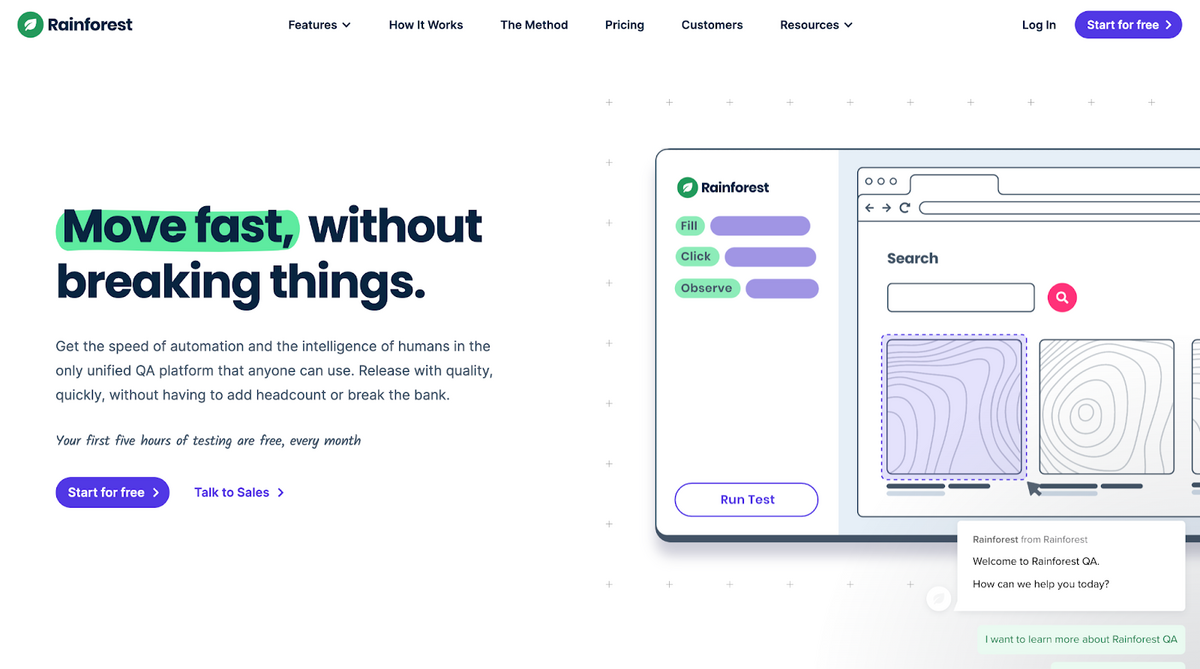
Their product is a no-code software testing platform, which in itself is pretty easy to understand from the first sales demo (which is entirely the point, since it’s a tool meant for non-technical teams to use) — but to do content marketing for them, we needed to sound like experienced QA specialists and software developers, because that’s who we were talking to.
Here’s how we tackled the challenge and turned their blog into a growth engine in less than 12 months.
In this post we’ll share:
- How to do BOTF content marketing for unfamiliar topics
- Our pre-kickoff process for getting up to speed on industries we’re unfamiliar with
- The 5 interviewing tactics we use to get deep product knowledge fast
- A breakdown of our top-performing article for Rainforest showing how we used this process to write one of the best resources on the topic on the internet
- The results we’ve achieved in our first year working with Rainforest
Note: If you’d like to learn our content strategy and apply it to your business, you can learn our process via our content marketing course and community, work with our agency, or apply to work on our team.
How to Do BOTF Content Marketing for Unfamiliar Topics
First, for those that aren’t familiar, our whole process of content marketing is based on prioritizing high-buying intent, “bottom of the funnel” keywords and topics (see links at the top of this article for more info).
Now, when you’re writing bottom of the funnel content, you’re writing for customers who are actively looking for a product that will solve a pain point they already know they have. This means they aren’t looking for education about their industry, which is the number one reason why you don’t need industry expertise to write for them.
What they’re looking for is assurance that the product they purchase will solve the problem they’re experiencing.
So, your job is actually very simple: figure out what problems the target audience is experiencing without your client’s solution and then figure out exactly how the client’s solution resolves those problems. Before we go any further, note how different this is than typical top of funnel “educational” content most companies produce non-stop, which require the authors to pontificate on the industry, give general advice, and sound like a “thought leader” (although we’ve written about how that phrase is often misunderstood).
Most products — even highly specialized SaaS products — solve surprisingly mundane problems that are actually quite common across other industries.
- Getting some information from Point A to Point B without damaging the data or causing a security breach
- Consolidating data from many sources to analyze it without manually re-entering all the data into Excel
- Eliminating unnecessary emails for routine communications
- Etc.
So as you’re researching the client’s product and their industry and interviewing their subject matter experts, you don’t need to worry about learning the ins and outs of the industry when it’s flowing smoothly.
You just need to know about the moments when their complex processes break.
And the places where processes break are usually in times of transition. Communication errors. Transportation problems. Organization of data. Transfer of records. Misunderstandings between people, and so on.
The problems that B2B products solve are always human and simple, no matter how convoluted the industry is.
In the case of Rainforest, it was tempting to think we needed to learn everything there is to know about software testing, like every best practice related to creating tests, or what causes software bugs in the first place. We did learn a lot more about software testing eventually, but at the start, all we needed to understand was where the problems exist with the most common approach to software testing.
That narrowed the scope of our initial research phase to a much more manageable level.
Our Pre-kickoff Process for Getting Up to Speed on New, Unfamiliar Industries
To be clear, we’re not trying to say that you can do content marketing for any industry without doing background research. Of course if you’re new to a somewhat complex industry or topic, you still need to do background research. But what you don’t need to do is take a college-level 101 course in the subject.
Instead, you need to spend two or three extremely focused hours with subject matter experts.
And when we talk about subject matter experts, or SMEs, we mean people inside your client’s company who know everything about their own product, and the problem it solves.
This is a clear distinction from a very common content marketing process of interviewing external SMEs, who are experts in the industry in general, but who often don’t know anything about your client’s product specifically. That process can be helpful when writing top of the funnel content, but it’s almost completely useless for bottom of the funnel, where you need to explain nuances of features, benefits, and differentiators to competition.
For products in unfamiliar spaces, before you get onto a call with your internal SME, you need to do some basic background research. It’s far more efficient to ask the SMEs to clarify what you learned online than to ask them to explain everything about their industry to you starting from scratch.
Keeping in mind the high-level, pain-point focus we outlined above, here’s the process we use to prepare for our kick-off calls:
- Read everything on the client’s website about their product.
- Type in the client’s product name on YouTube, and see if there are any (1) video demos of the product, (2) short explainer videos, or (3) anything else that would help familiarize you with the product.
- Do the same process for their top 3 competitors (you should have asked them who their competitors are before starting the engagement).
- Read reviews of the client’s product/service online (especially if they’re software, but Google Reviews exist for most businesses) and look for mentions of specific benefits or frustrations.
- Read reviews of their top competitors.
Anytime you encounter something you don’t understand in this process, add it to your question list. Note how focused this research is on products — the client’s, and their competitors — not general industry how to stuff. That’s intentional. Again, we’re looking for deep product knowledge to write BOTF content.
Then, for the kickoff interviews, spend at least one hour with one or two experienced members of the sales team, and another hour with one or two experienced members of the product team, asking them follow-up questions from your research. Your questions should typically fall into four categories:
- Who is the target audience(s)?
- What are the target audience(s) pain points?
- How does the product solve each of those pain points? (specifically, which feature(s) solve it?)
- What are the product’s differentiators?
This pre-kickoff and kickoff process will give you all the industry expertise you’ll need to build the client’s content strategy and decide which topics to write about first.
However, these two steps won’t give you all the details you need to write every article about the product. For that, you’re going to need an SME interview for every unique topic you write about.
And that’s when you’ll need excellent interviewing skills.
The 5 Interviewing Tactics We Use to Get Deep Product Knowledge Fast
Most advice about interviewing SMEs will cover the same basic tips, which to me are just the ground rules.
- Do pre-interview research
- Write down your questions in advance (but be prepared to deviate often)
- Record the interview
In our case, the most important aspect of pre-interview research is to analyze the SERP and figure out what all the articles on page 1 are saying. We go into this process in detail in our article about SEO content writing so I won’t go into that here.
What I will share are five next-level interviewing techniques that will help you get precise, detailed, and technical information out of interviews that you can translate into plain English explanations for your article.
Establish Your Baseline Understanding of the Topic with the SME
Here’s a critical realization that’s not obvious at first: Most SMEs aren’t experts in communicating about their expertise. Unless they have a background in scientific communication or teaching high school or something, it’s unlikely that they’ll be a natural at explaining technical topics in a way that anyone can understand.
As a result, most SMEs actually go too basic in their explanations of technical concepts. Since they have no idea what your baseline understanding is, they oversimplify details that you really need to grasp precisely, and they’ll use language that they wouldn’t use when talking to their industry peers. If you simply repeat their explanations in your content, you’re likely to get it wrong and/or end up writing below the knowledge level of the audience you’re trying to reach.
So to avoid this problem, you first need to let the SME know exactly what your baseline understanding of the issue is — especially when you’ve already gotten a handle on their industry from your pre-kickoff research. And you can usually do this quickly and efficiently by the way you phrase your questions.
For example, here’s a paraphrase of a question I asked in one of the early interviews with Rainforest:
“What I understand about software testing is that most tools don’t actually test exactly what the user sees and instead test the code itself, and this is a problem because it means you can miss certain types of visual bugs, but what I don’t understand is, are those tools still considered to be testing the “user interface” even though the test doesn’t happen on the user interface?”
Note how detailed this question is: I told the SME what I already knew, and then asked a question about something I truly couldn’t find the answer for online. This is far more useful than walking into an interview and asking “So what differentiates your product?” and getting some high level cliches you could have read on their website beforehand.
Dig Deeper to Understand Claims
In our article about what good blog writing looks like, we distill the difference between a good post and a bad post simply:
Bad posts make claims. Good posts make claims and then back them up with details, examples, and explanations of impact.
However — and again this might be counterintuitive — most SMEs just make claims when they answer your questions, without providing any backup!
They’ll say things like, “Our product makes it easier to write tests.” Or, “Our product helps you see why your users abandoned their checkout cart.” Or, “Our product automates time-consuming, manual processes.”
When you’re interviewing, you have to ask a follow-up question whenever you hear a claim without any backup.
“How does your product do that? What problem is that solving? What happens if the person just ignores that problem or uses a workaround?”
You should even play devil’s advocate.
“Why is that easier than the status quo/competitor? Why can’t you just do that with a spreadsheet [or insert whatever the default or free alternative is]?”
These questions can help break the SME out of the habit of just repeating the standard elevator pitch for the product. They’ll often switch to describing a specific use case where the value of their product really shines, or where the consequences of ignoring the problem really become clear.
SMEs also tend to use a lot of terms that will be meaningless to you without a reference point (and which sound like empty business jargon if you use them in your writing). I’m talking about terms like:
- Faster
- Slower
- More often
- Easier to use
- More effective
- More efficient
Whenever you hear those phrases, you need to get a reference point:
SME: “Our process helps teams release new software updates really fast,”
Interviewer: “How fast is fast? Once every two weeks?”
SME: “No, like three times a day.”
Interviewer: “And what’s typical before they use you?”
SME: “Most are releasing a couple times a month”
Push for Your Own Aha Moment
In the SaaS world, the “aha moment” is the moment when the customer first grasps the real value of the product — usually because they’re able to see exactly how it will save them from a very specific pain they’re currently experiencing.
The goal of all the follow-up questions in the previous point is to make sure you get to an aha-moment for every important feature of the client’s product.
Typically, the best way to do this is to ask for an example of a use case for each feature of the product. Don’t let them dazzle you with shiny bells and whistles and nifty dashboards or vanity metrics unless they can show you the exact situation where each feature becomes useful.
Here’s a 50-second video clip from one of my earliest interviews with Maciej Gryka, an internal SME at Rainforest, where I show the follow-up questions that I needed to ask to get to that “aha” moment:
If I hadn’t been determined to get to my own personal aha moment, I might have left the interview with the following understanding:
Claim: Rainforest helps you expand your test coverage.
Explanation of that Claim: Rainforest lets you automate actions that leave the browser, which other testing tools can’t do.
That’s not bad, but the aha moment is what will take your writing from good to great:
Aha moment: This means you can test things like downloading a document from a web application, like you might do in Google Docs or Canva or any other web app that lets you download a file.
Always Get a Demo
One of the great things about doing interviews on Zoom is how easy it is for your SME to give you a demo of whatever they’re talking about, especially if their product is software. Usually, they just have to share their screen and then click around inside the product.
I can’t overstate how important it is for you to get a visual of what the product looks like. It will help you hold onto the information, and it will often make the whole thing seem much simpler than it sounded in words alone.
And when it comes to software products, the demo is often a great way to source images that you’ll use in the article. When you review the recording of the interview, you can grab screenshots of the product screens that demonstrate each feature. Those screenshots themselves may not be high enough resolution to use in the article, but you can send them back to the SME and ask them to recreate the screenshot on their screen. It’s often much easier than describing the image you want them to create.
But even if your client produces a tangible, non-software product or offers a service, getting a demo of some kind is invaluable, and usually not that hard. If they work in a factory, get a little Zoom/FaceTime tour of the factory. If they provide a service, have them walk you through all the stages of their relationship with their clients, and show you the end-results of those client engagements.
Paraphrase Everything the SME Says Back to Them
To make sure you’re actually understanding everything, it helps to repeat back to the SME what you thought they said. Ideally, you’ll simplify it into language that strikes a beautiful balance between being accessible to a wide audience, but still being technically precise. After all, you’re a writer — that’s what good writing is.
One of my favorite ways to check my understanding of the topic throughout the interview is to make up my own analogies for things. One of my favorites is a car. Everything is a type of car. A spoon is a car that carries cereal from my bowl to my mouth. An email is a car that carries words from my laptop to yours.
A Breakdown of One of Our Top-Performing Articles for Rainforest Showing How We Used This Process to Write One of the Best Resources on the Topic on the Internet
The second article I wrote about Rainforest became their top converting piece over the next 12 months after it was published. While I learned a LOT more about software testing over the next year of writing about the product, our research and kickoff process gave me enough insight to be able to speak to their target audience effectively from day one.
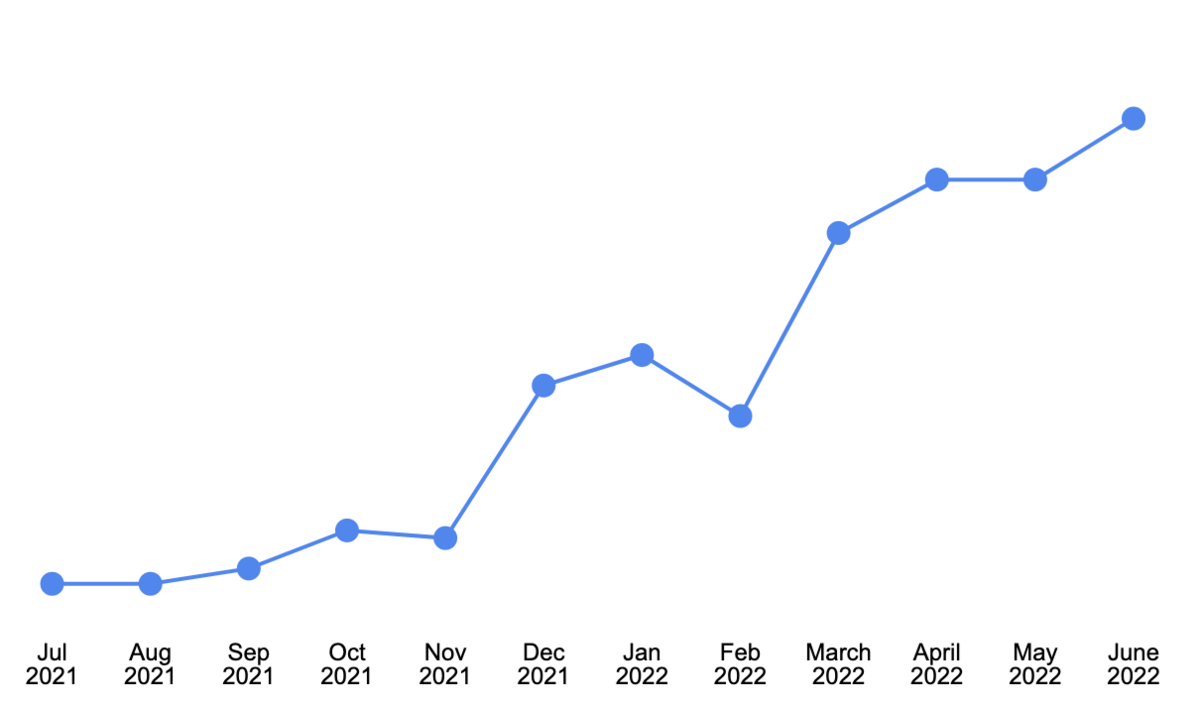
The article was published July 15, 2021. As of July 22, 2022, it ranked #1 for 17 keywords and ranked #2 or #3 for many more. It had a conversion rate of 1.8% (conversions/unique page views), which is significantly higher than most single blog posts. (Top of funnel content conversion rates typically hover more in the 0.10% range — and that’s only for the top performing articles.)
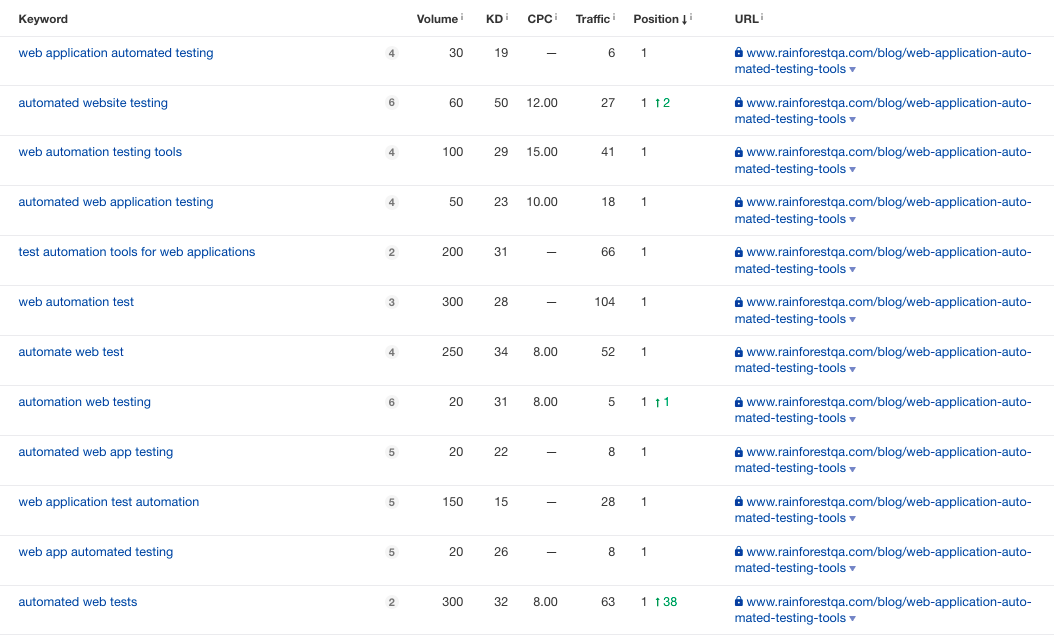
Here’s a breakdown of some of the ways the interview process helped me write a top-ranking article on a topic I knew very little about beforehand.
Finding the Holes in the SERP
Our writing process starts with a SERP analysis, mostly looking for the holes in the existing articles that are ranking on page one. What questions would a searcher still have after reading the top two or three articles?
In this case, I quickly realized that the existing articles didn’t help readers understand the ecosystem of software testing tools as a whole, or where each tool fit into that ecosystem. This is because many of the listicles took the “longer is always better” approach to SEO, and dumped as many tools as they could into their articles, without bothering to categorize them or make any recommendations.
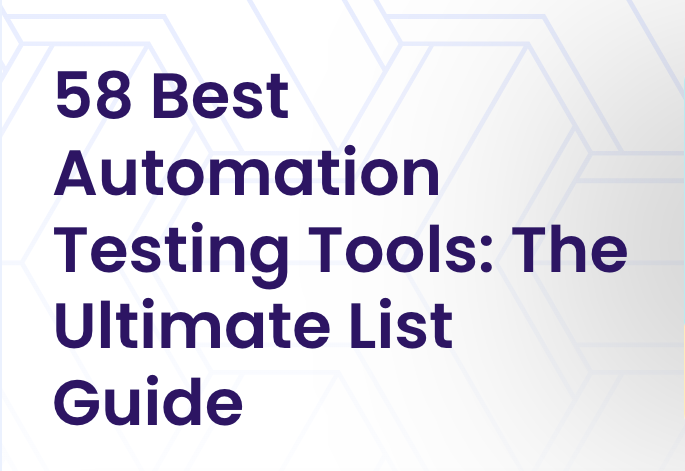
Most of these articles left the reader more confused than when they started.
In contrast, the first thing I did was define the categories for the reader in plain English, tell them which category Rainforest’s product belonged to, and accurately classify the other tools I included in my list.
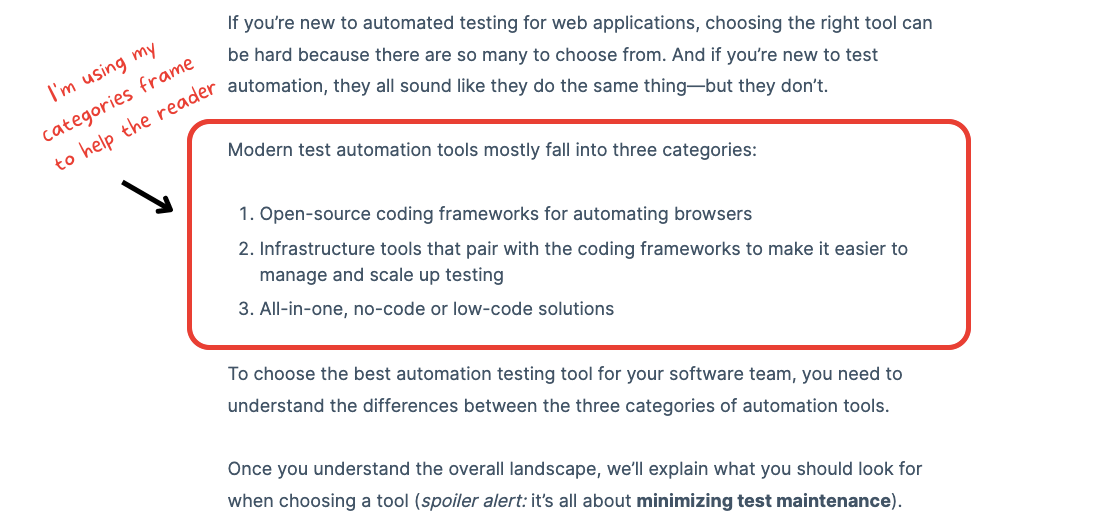
Backing Up My Claims
A feature we include in many of our articles is the “What to look for” section. A lot of software product review articles include a section like this, but they often list really basic things like whether the software is compatible with your operating system/devices, how many user seats you can get, or pricing info.
But we use the What to Look For section to cut to the heart of the thing(s) that will drive you nuts when using any competitor’s solution. A.k.a.: the pain point that drove our readers to put this question into Google in the first place.
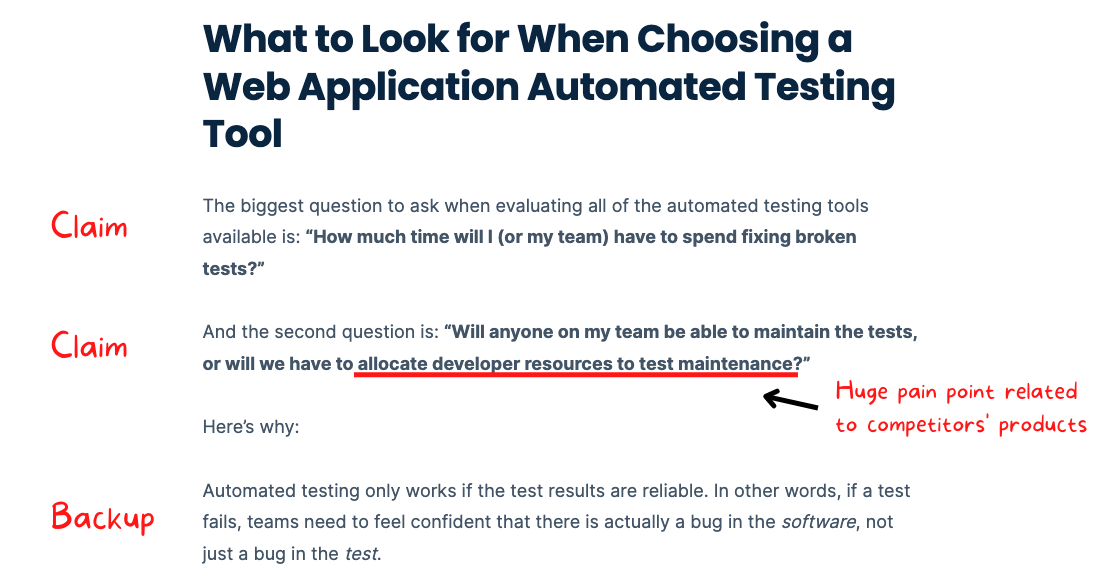
Selling the Product
Every article we write, no matter where exactly it falls in the funnel, has to make a compelling pitch for our client’s product because the purpose of our articles is to drive product sign-ups (or demo requests or qualified leads for service businesses).
Rainforest has a truly differentiated product, but you often have to do a bit of education and give the reader a specific example to make the differentiation clear. To do that, I had to establish what the “normal” approach to software testing is, explain the downsides of that approach, and then explain how Rainforest does it differently.
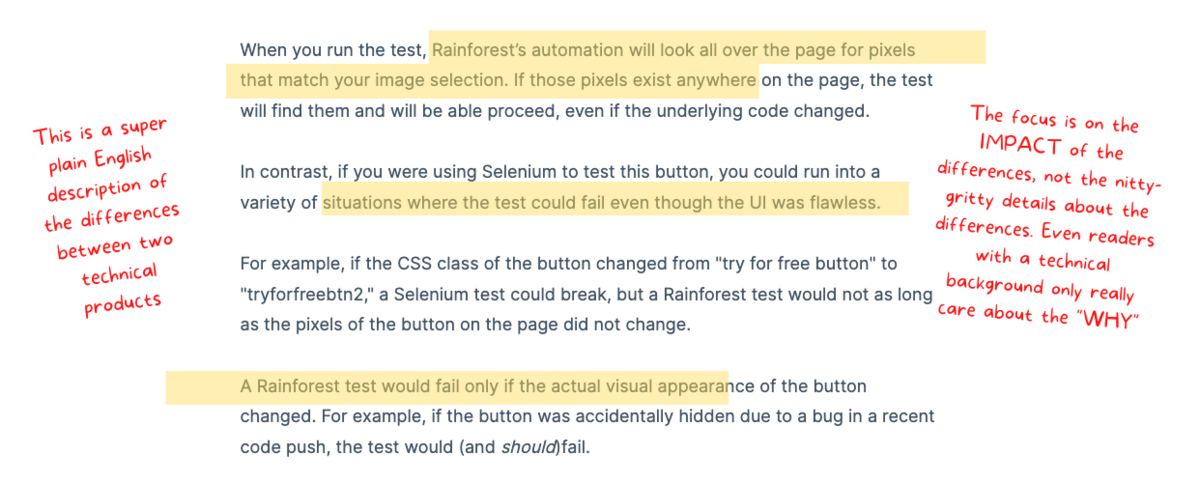
The Results We’ve Achieved in Our First Year Working with Rainforest
I’m proud of the results we achieved in our first year working with Rainforest QA. Within just seven months, we hit what we consider to be the breakeven point for them, meaning the value of the product sign-ups our content was bringing in was worth more than our monthly retainer. We’ve written a lot about how we measure ROI from content marketing, and that article includes an ROI calculator that you can use for yourself if you want to explore that more.
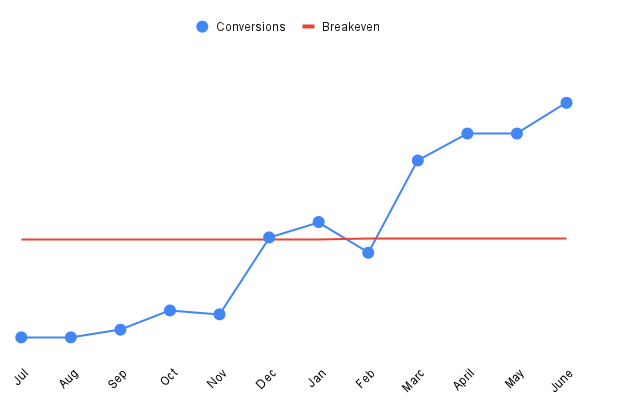
After one year, we had at least 26 top 3 rankings for keywords with extremely high buying intent, and 12 more rankings somewhere on page one.

Of the 34 articles we created during our engagement, 16 rank in the top 3 positions for the keyword we optimized them for (and many of them rank in the top 3 for many other related keywords).
Want Similar Results? Work with Us, Learn from Us, or Join Our Team
We’re a fully done-for-you content marketing agency focused on B2B and SaaS clients. We create your content strategy, write three premium, high-converting articles a month, audit, monitor, and constantly improve your technical SEO, and systematically improve your search engine rankings (and thus, traffic) through link building and paid ads.
We have completely transparent pricing, and we hold ourselves accountable to creating leads for our clients.
Interested? Fill out our interest form.
Not ready to hire an agency? Check out our content marketing course.








